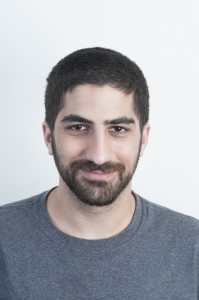A third-grader once asked me why, if I was so interested in science, I’m not taking any science classes in college. The best answer I could give was that my college and I don’t agree what science is or how it should be taught.
Science isn’t defined by its body of knowledge, but by the process by which it arrives at that knowledge. To quote physicist Lawrence Krauss, “The process of asking the questions and figuring out how to answer them is what science is all about. The answers are not important.” And yet, our entire system of science education is based on making kids memorize phrases, classifications and formulas.
Every student who plans to transfer has or will have taken at least two science courses. Everyone who’s already put that requirement behind them has felt what two hours of a monotonous lecture can do to the weight of their eyelids. They’ve probably asked themselves, with good reason, just how the hell they’re ever going to need what they’re being asked to memorize.
I don’t know anyone from my ninth grade biology class who can still draw the anatomy of an animal cell. Let’s not pretend art majors need to know the zeroth law of thermodynamics.
Our current broken curriculum is structured the way it is because scantrons are an easy way to quantify
how much students are learning. But as our English departments know, multiple choice questions aren’t good measure of how well students can apply concepts rather than just recite them. Assign essays in science classes. Test their ability to reason deductively. Memorization is really only appropriate for courses like language or history.
Additionally, the net learning that we’re measuring in the status quo is practically zero. Our college and grade school students retain almost nothing they learn. In a 2004 survey true/false question done by National Science Foundation, about 50 percent of Americans thought the Sun goes around the Earth rather than the Earth orbiting the Sun.
Krauss addressed this problem in a recent video posted by the BigThink Youtube channel, saying, “Most kids won’t necessarily become scientists, but the tools of science and of exploring the universe, distinguish sense from nonsense and take a complicated situation and simplify it enough to address it. And the fact that science addresses the most remarkable questions that are in each of us, are the things that we want to instill in children.”
A friend of mine who teaches a third grade class in Oakland invited me to come in and answer her students’ space questions for a couple hours after they had just finished a unit on astronomy. Almost every question surpassed what I expected.
Why are the inner planets rocky and the outer planets gassy? Why is there no ground on Jupiter? How do rockets turn around? What’s going to happen to Earth when the Sun dies? Every answer was followed by a collective “woooah,” a round of giggles, and a new scramble of hands raising to ask the next question.
Any curriculum that may turn those third-graders into glassy-eyed college students, scrawling Kepler’s laws of planetary orbit between desperate stares at the classroom clock, can not be called “education.”
Career scientists much more closely resemble third graders than community college students. They dedicate their lives not to memorizing formulas and terms, but figuring out how to solve mysteries. And there are plenty of mysteries. The students we’re supposed to be training to solve these mysteries are flipping flash cards.





































































